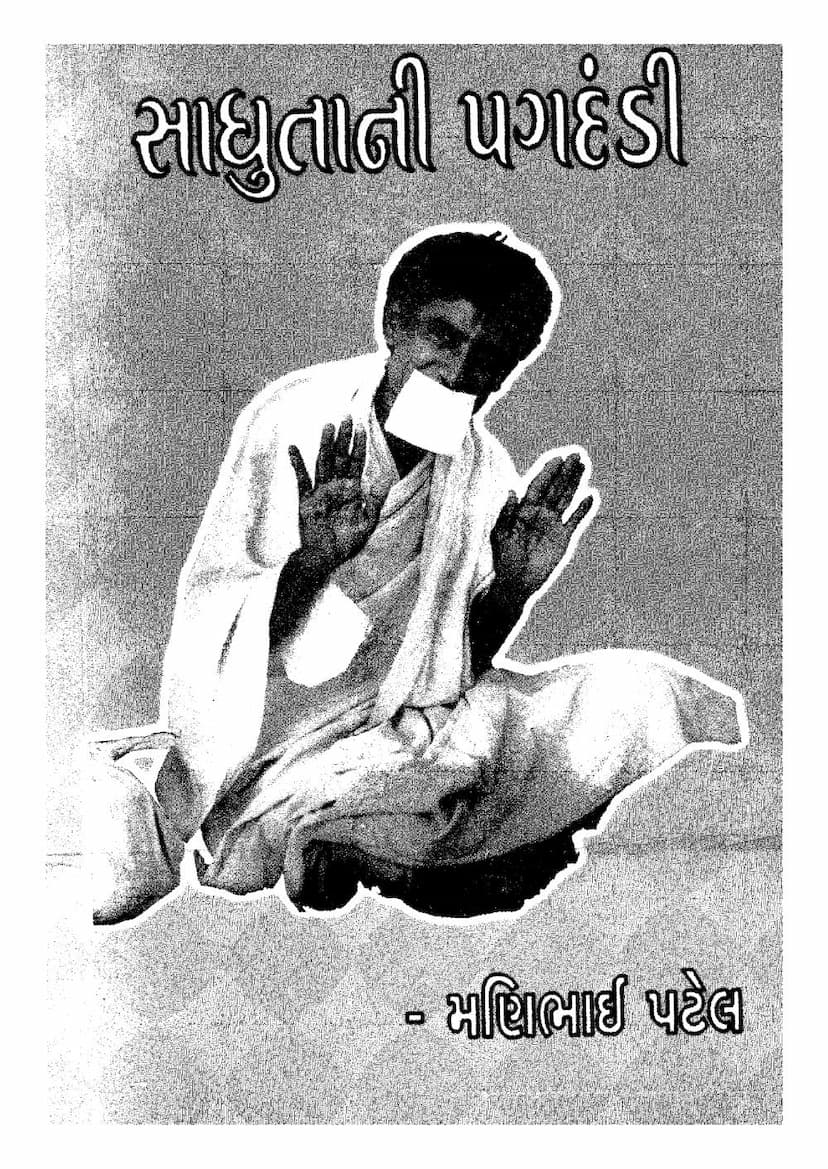Sadhuta Ni Pagdandi Part 6
Added to library: September 2, 2025

Summary
Here's a comprehensive summary of "Sadhuta ni Pagdandi Part 6" by Manilal Patel, based on the provided text:
Overview:
"Sadhuta ni Pagdandi Part 6" (The Path of Sainthood, Book 6) by Manilal Patel, published by Mahavir Sahitya Prakashan Mandir, Ahmedabad, chronicles the significant travels, activities, and reflections of Muni Shri Santbalji between November 19, 1956, and November 27, 1958. This volume continues the narrative of his spiritual and social reformist journey, highlighting his deep engagement with the common people, his advocacy for social justice, and his commitment to Jain principles in practical life.
Key Themes and Activities:
-
Social Reform and Public Engagement: The book details Muni Shri Santbalji's extensive travels across Gujarat and Maharashtra, engaging with diverse communities from villages to cities. He actively participated in discussions and initiatives related to:
- Gram Sangathan (Village Organization) and Farmer's Rights: He strongly supported village self-reliance and advocated for the rights of farmers, including discussing land reforms, tenant rights, and challenging injustices within religious institutions (as seen in the Sarangpur temple incident). He believed in empowering village communities through self-governance and collective action.
- Prohibition of Alcohol: He actively campaigned against alcoholism, particularly among tribal communities, and encouraged liquor prohibition.
- Interfaith Harmony and Social Cohesion: His travels emphasized the importance of religious tolerance and communal harmony, noting instances of respect received from Muslim communities as well.
- Women's Empowerment: He recognized the significant role of women in society and encouraged their active participation in community development and decision-making.
- Education and Self-Reliance: He promoted education and vocational training, particularly in rural areas, emphasizing self-reliance through activities like spinning (Ambar Spinning).
- Combating Social Evils: He addressed social issues like untouchability, caste discrimination, and the need for ethical conduct in public life. He also highlighted the importance of spiritual grounding and the integration of ethics in social action.
-
Spiritual and Philosophical Insights: The text reflects Muni Shri Santbalji's profound spiritual understanding and his ability to connect complex philosophical concepts with everyday life.
- The Interconnectedness of Religion and Politics: He articulated that politics (state) is an integral part of society, and separating it entirely could lead to societal decay. He advocated for a moral foundation in governance.
- The Power of Love and Non-Violence: He consistently emphasized the principle of "live and let live" and the transformative power of love and non-violence in resolving conflicts and fostering societal progress.
- Personal Discipline and Integrity: The diary entries reveal his meticulous adherence to personal discipline, including fasts, silence, and self-correction, even when faced with external criticism or difficult situations. His commitment to truth and ethical conduct was unwavering.
- Understanding Human Nature: He often used analogies and stories to illustrate points, emphasizing the importance of self-awareness, controlling desires, and understanding the complexities of human behavior and societal dynamics.
-
Engagement with the Political Landscape: The book touches upon the political climate of the era, including discussions on the MahaGujarat movement and the formation of a bilingual state. He engaged with political leaders and discussed ways to harmonize constructive work with political processes. He stressed the need for ethical conduct within political parties and the importance of grassroots movements.
-
Guruship and Discipleship: The volume also highlights his relationship with his Guru, Gurudev Nanchandraji Maharaj, and his interaction with other spiritual figures, emphasizing the lineage of spiritual guidance and the progressive evolution of spiritual thought. His unique approach of including women like Mirabehn in his spiritual travels as companions was seen as a revolutionary step.
-
The Role of Organizations: He strongly supported and guided the formation and functioning of various organizations, such as the Prāyogik Sangh, Gram Sangathan, and cooperative societies, believing that collective action and structured organizations were vital for achieving social and economic progress.
-
Personal Reflection and Humility: Despite his significant public role, the diary entries reveal his introspection, his acceptance of personal shortcomings, and his constant effort to learn and grow. His humility is evident in his interactions and his acknowledgment of his own limitations.
Key Events and Locations:
The book meticulously records his daily activities, including visits to:
- Gujarat: Dholka, Adaroda, Sarangpur, Bhalkha, Nalkantha, Vaghjipura, Meethapur, Vadgama, Bhadran, etc.
- Maharashtra: Ghatkopar, Borivli, Nandurbar, Dhulia, Malegaon, Nashik, Pune, Mumbai, etc.
Notable events include his Chaturmas (periods of religious observance) in Adaroda and Ghatkopar, his deep engagement with rural issues in the Bhal region, his participation in the Sarangpur temple dispute resolution, and his extensive travels in Maharashtra, where he faced language barriers but connected with people through his message of universal love.
Narrative Style:
The diary entries, compiled by Manubhai Patel and edited by Manu Pandit, provide a direct and often poignant account of Muni Shri Santbalji's experiences. The language is simple yet profound, reflecting his deep compassion and his connection with the masses. The book offers a documentary record of his revolutionary vision and his efforts to translate it into practical action.
Overall Significance:
"Sadhuta ni Pagdandi Part 6" serves as a valuable testament to Muni Shri Santbalji's life as a visionary social reformer and a dedicated spiritual leader. It highlights his commitment to Jain principles, his practical approach to societal challenges, and his enduring influence on the spiritual and social fabric of India. The book is an essential read for understanding the evolution of Jain thought and its application in contemporary social reform movements.